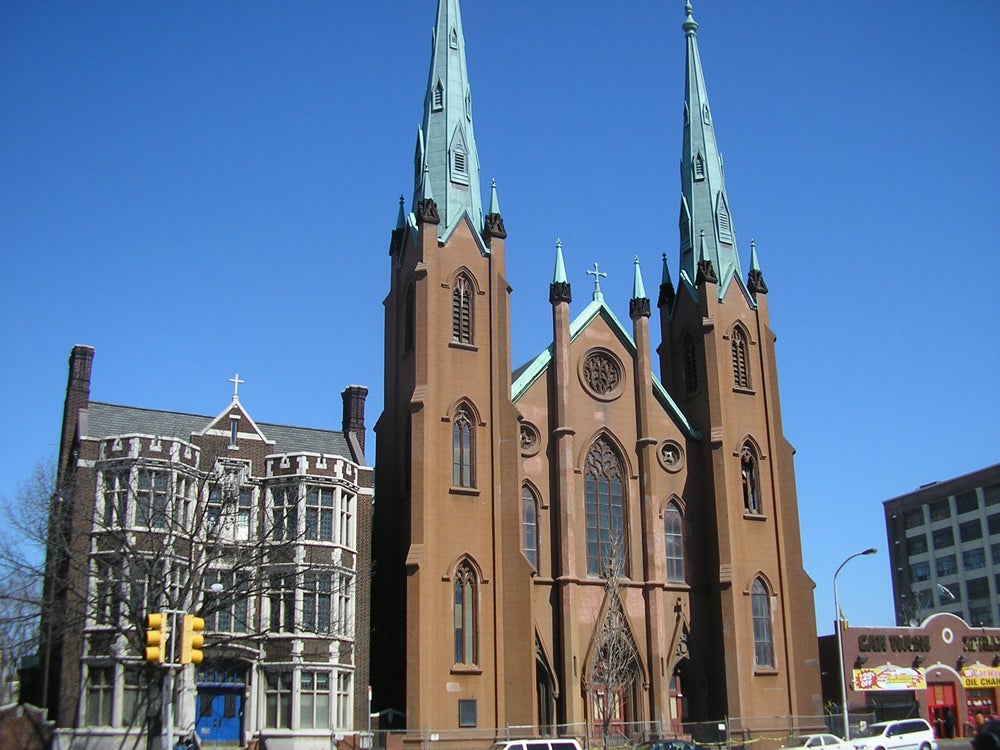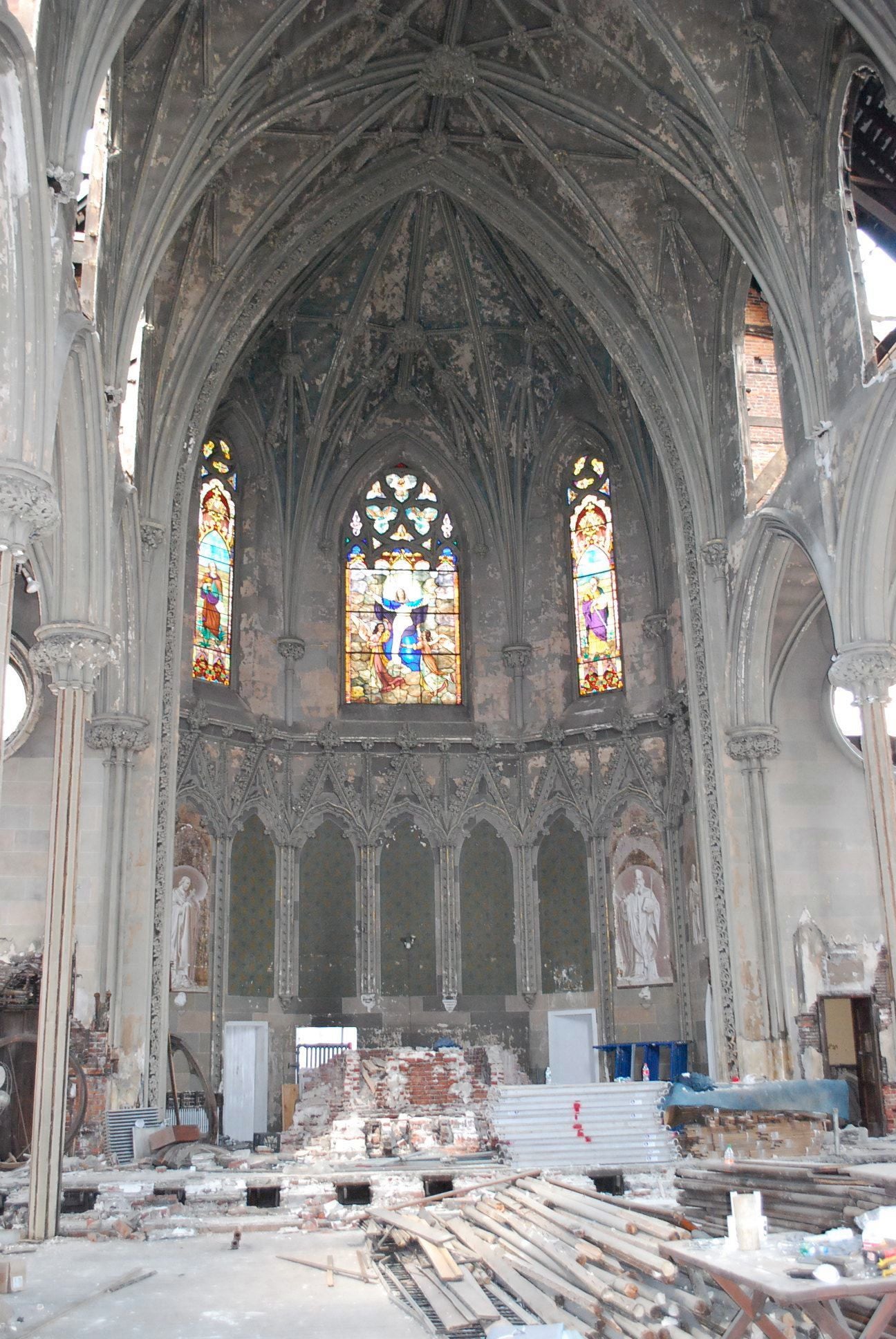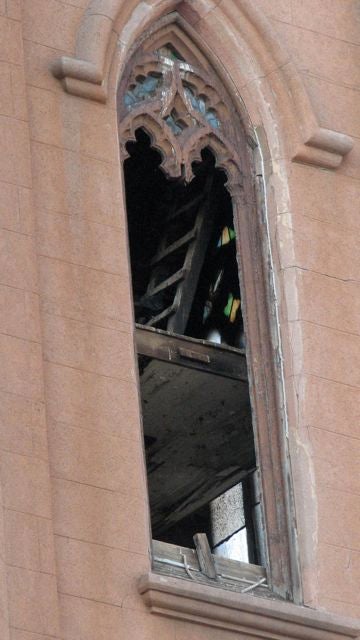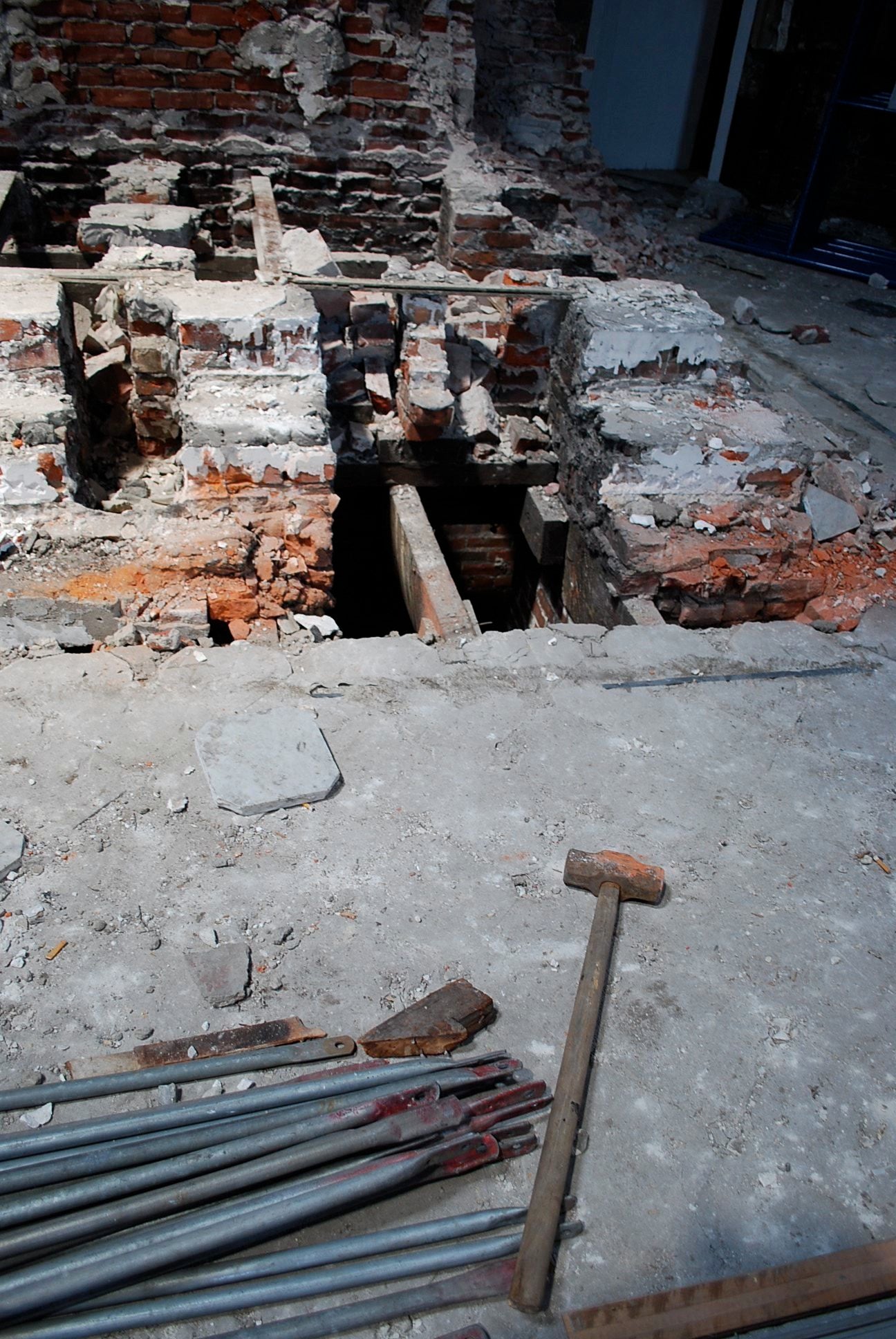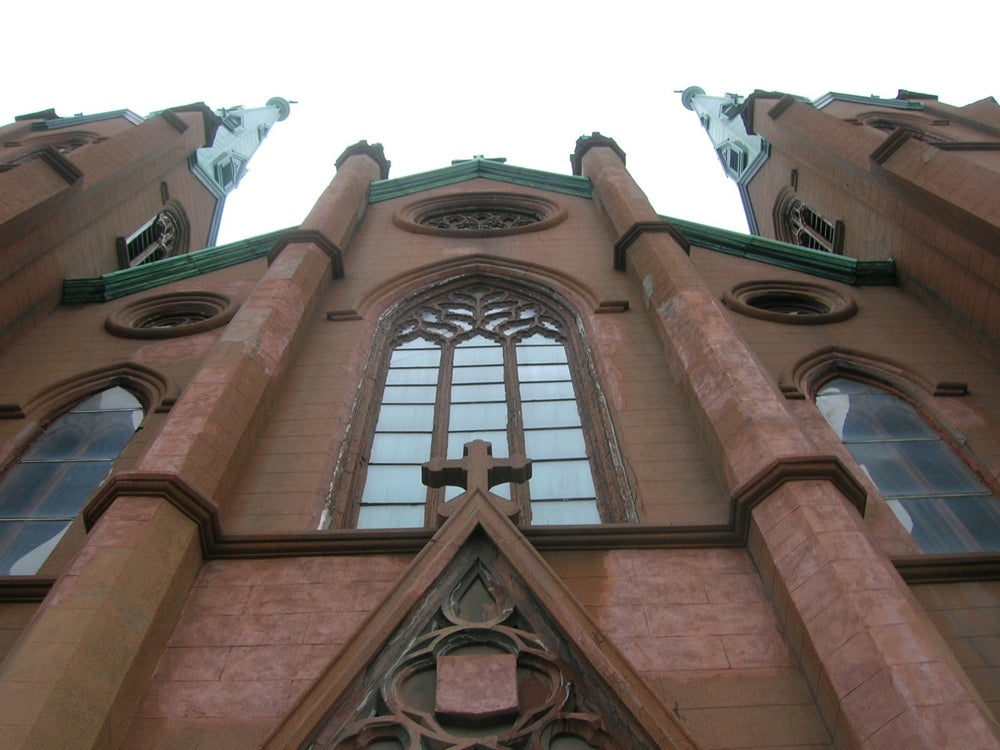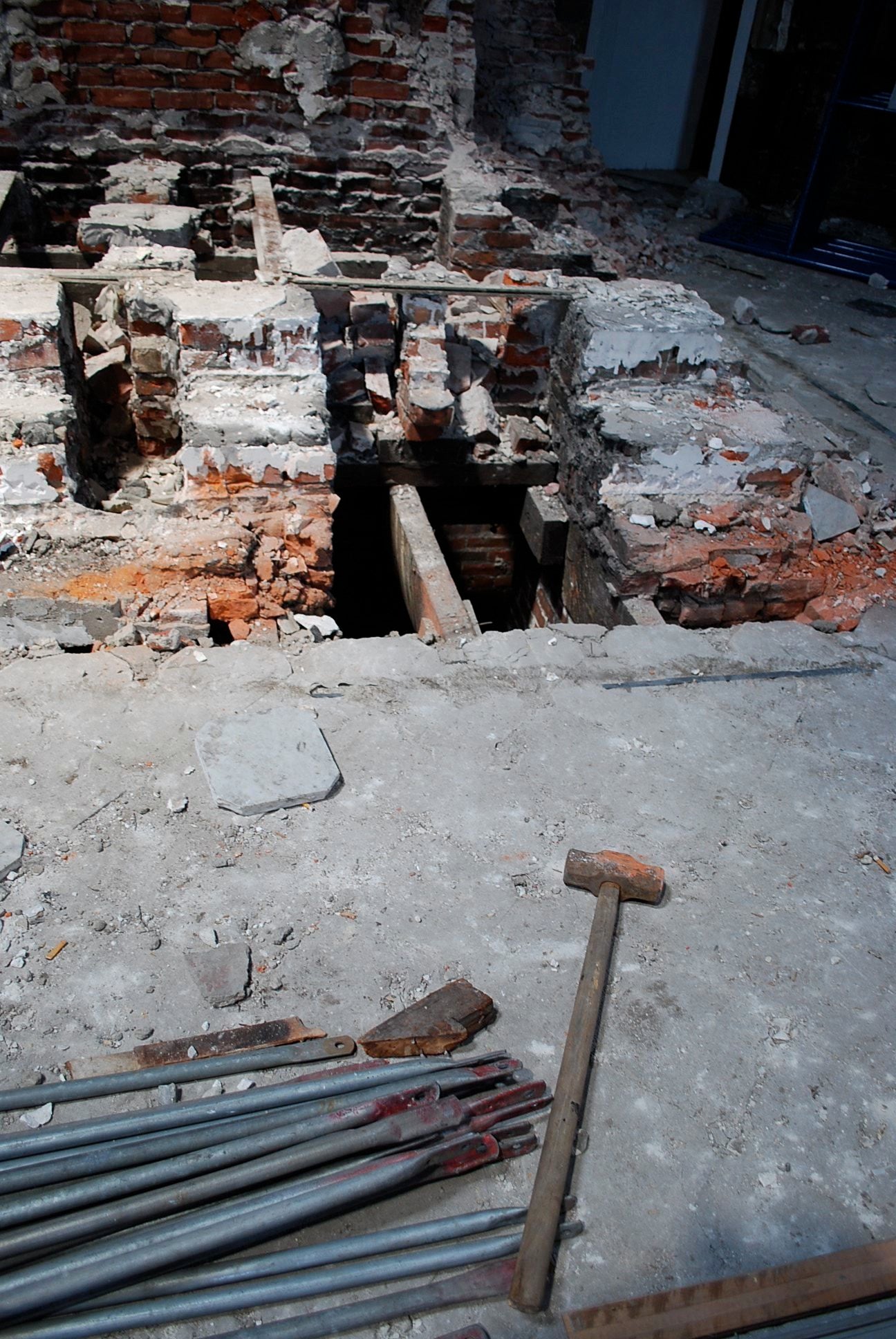Assumption Church battle gets under way in L&I arena
The legal battle over the survival of the Church of the Assumption moved firmly into the jurisdiction of the Board of Licenses & Inspection Review today. But after five hours of testimony, only one side had presented its arguments and the case was continued until March 28.
The owner of the church building on Spring Garden Street near 11th is Siloam, a social service agency for people with AIDS. The nonprofit received permission last September from the Philadelphia Historical Commission to demolish the church, which the agency says it can’t afford to restore and is unable to sell. The Callowhill Neighborhood Association, supported by the preservation community, appealed the demolition permission to the L&I review board. The City Solicitor’s Office is working with Siloam to uphold the Historical Commission decision.
Whoever wins the current battle, the case will most likely move next to the Court of Common Pleas, where the City Solicitor is already contending the L&I board overstepped its authority when it reversed a Historical Commission ruling on the redevelopment of the Dilworth House. The court may rule on that case in the next few weeks.
The L&I board cannot sit in “de novo review” – as if no prior hearing had been held – of Historical Commission decisions, the City Solicitor argued in the Dilworth brief.
But that’s just what the L&I board is doing again in the church case.
At Monday’s hearing, the attorney for the civic group, Sam Stretton, cited the Dilworth case and asked the board to follow the strictures of a de novo review in hearing the appeal.
Assistant City Solicitor Leonard Reuter, working in tandem with Siloam attorney Kevin Boyle, began the agency’s case by calling Jonathan Farnham, executive director of the Historical Commission, who recalled the history of the church case before the commission.
The Church of the Assumption, which was designed and built in 1848-49 by prominent ecclesiastical architect Patrick Charles Keely, was listed on the Philadelphia Register of Historic Places in May 2009. Siloam appealed for permission to demolish the church anyway on the grounds of financial hardship, and the commission’s architectural and financial hardship committees both recommended that the appeal be granted. The full commission voted Sept. 10 to allow the demolition.
Joseph Lukach, former executive director of Siloam, testified that the non-profit had to raze or sell the church building in order for the agency to survive. Siloam has received estimates of $5 million to $6 million to restore the building and $1.5 million just to stabilize it. Consultants hired by Siloam have said the building’s steeples are in particular danger of collapse.
Real estate brokers from Colliers International, who have handled the sale of the church building since January 2010, said there have been 75 inquiries about the building and about 15 prospective buyers who inspected it. But they said none have made serious offers for the church, which is valued by the brokers at $575,000.
A likely witness for the civic group when the case resumes will be a representative of the Clay Studio. Tim Duffield, a member of its board for directors, said the art studio on 2nd Street in Old City has outgrown its 16,000 square feet after 35 years at that location. Its lease is up in four years and it has begun looking for a new home. “We realized this [church building] has the potential,” Duffield said before Monday’s hearing began.
A move to a historic building would mean the buyer would be eligible for historic restoration tax credits and new market investment credits, he said. “We could realize a lot of the expense through tax credits,” Duffield said. With that kind of support, purchase of the church “enters the realm of viability.”
The Clay Studio has been shown the property by Colliers representatives, but talks are “on hold because the wrecking ball is around the corner. We aren’t prepared to spend the money unless we’re given time to do the deliberations,” Duffield said.
He noted that the Spring Garden Street neighborhood is already experiencing cultural activity and has lots of vehicular traffic. “We would like the opportunity to be a cultural anchor for this resurgent area,” Duffield said.
Contact the writer at ajaffe@planphilly.com.
WHYY is your source for fact-based, in-depth journalism and information. As a nonprofit organization, we rely on financial support from readers like you. Please give today.



